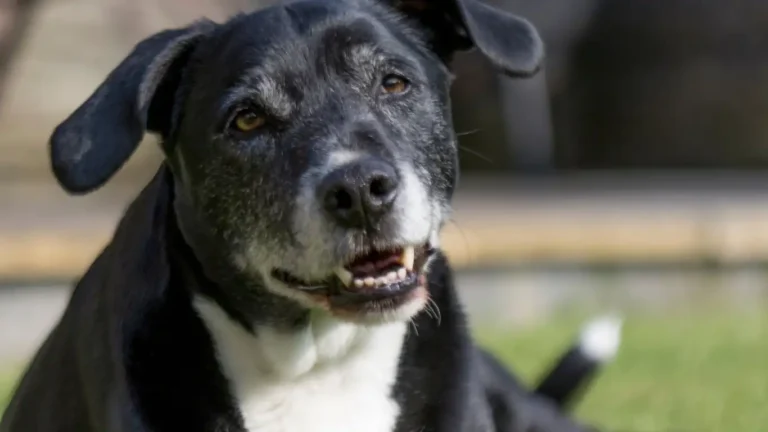How to Prepare a Homemade BARF Diet for Dogs to Boost Health and Energy
If you’re a pet parent who’s concerned about what goes into your dog’s food, you’ve likely heard about the BARF (Biologically Appropriate Raw Food) diet. You might even be considering making the leap and preparing a homemade BARF diet for your dog yourself. Trust me, I totally get the urge! As an Animal Care Specialist with years of experience working at pet clinics and shelters, I’ve seen firsthand how important it is to nourish our dogs with quality food. A homemade diet can be a great way to ensure they get the best nutrition, and today, I’m here to guide you through the process of preparing a homemade BARF diet for your dog. Let’s dive in!
What is a BARF Diet for Dogs?
Before we jump into the “how” of preparing a homemade BARF diet, let’s break down what BARF actually stands for. BARF stands for Biologically Appropriate Raw Food, which is based on the idea of feeding dogs a diet similar to what their wild ancestors would have eaten. Think raw meat, bones, and vegetables, all designed to provide a balanced and natural approach to nutrition. In theory, this diet supports your dog’s health, boosts their immune system, improves their coat, and even helps with their digestion.

The BARF diet isn’t just about raw meat; it’s about providing a complete meal that mimics what dogs would naturally eat in the wild. By incorporating a mix of muscle meat, organs, bones, and plant-based ingredients like vegetables and fruits, you can create a balanced diet that covers all the essential nutrients your dog needs.
Why Consider a Homemade BARF Diet for Dogs?
So, why should you even bother with the homemade version of the BARF diet? Well, as someone who’s worked in animal care for years, I’ve seen the benefits of feeding dogs a more natural diet. For one, many commercial dog foods are filled with preservatives, artificial colors, and fillers like corn or soy that aren’t exactly beneficial for our furry friends. Homemade diets, on the other hand, give you complete control over what goes into your dog’s bowl. You’re choosing fresh, wholesome ingredients—free from unnecessary additives. Plus, if your dog has allergies or sensitivities, homemade BARF allows you to tailor the ingredients to meet their specific needs.

Additionally, a homemade BARF diet can help address specific health concerns. Whether your dog struggles with weight management, skin issues, or gastrointestinal problems, raw food diets have been shown to support better digestion and overall well-being. Over the years, I’ve witnessed how a tailored diet can improve a dog’s energy levels and coat condition. Plus, it can help prevent common problems like obesity, which is on the rise in pets.
What Should You Include in a Homemade BARF Diet?
Now that you’re convinced homemade BARF is a good option, let’s talk about the essentials you need to include in your dog’s meal plan. The goal is to create a balanced diet that closely resembles what they would naturally consume in the wild. Here’s what you need:
- Muscle Meat: This is the primary source of protein in a BARF diet. Examples include chicken, beef, turkey, and lamb. It’s important to include a variety of meats to ensure your dog gets a wide range of nutrients.
- Organ Meats: These are incredibly nutrient-dense and should make up about 10% of your dog’s diet. Options include liver, kidney, and heart. Organ meats provide essential vitamins and minerals that muscle meat alone can’t supply.
- Bones: Raw bones are an important part of the BARF diet as they provide calcium and other minerals. Never feed your dog cooked bones, as they can splinter and cause choking or internal damage. Some safe raw bone options are chicken necks, turkey wings, or beef marrow bones.
- Vegetables: While dogs are carnivores, vegetables still play an important role in their diet. They provide fiber, antioxidants, and essential vitamins. Safe vegetables include carrots, spinach, broccoli, and sweet potatoes. You can lightly steam them to make them easier for your dog to digest.
- Fruits: Fruits like apples (without the seeds), blueberries, and bananas can be added in moderation to provide extra vitamins and minerals, plus they’re great for a little treat!
- Supplements: Depending on your dog’s health and activity level, you might need to add supplements like fish oil (for omega-3 fatty acids), calcium, or probiotics to their meals. I’ve seen some dogs thrive on these added nutrients, especially if they’re very active or have specific health concerns.
How to Transition Your Dog to a BARF Diet
Transitioning your dog to a homemade BARF diet should be done gradually. Just like with any dietary change, you don’t want to go from kibble to raw food overnight. Doing so too quickly can lead to digestive upset, like diarrhea or vomiting, as your dog’s system adjusts. Instead, follow a gradual transition over the course of 7-10 days. Here’s how you can do it:
- Start by mixing 25% BARF food with 75% of your dog’s current food.
- Every 2-3 days, increase the percentage of BARF food and decrease the kibble.
- By day 7-10, your dog should be fully transitioned to the BARF diet.
During this transition period, keep an eye on your dog’s stool and overall behavior. Some dogs take to raw food more easily than others, but if you notice any signs of discomfort or digestive issues, don’t hesitate to slow down the process and consult with a vet.

Is a Homemade BARF Diet Right for Your Dog?
Before you make the leap into preparing a homemade BARF diet, it’s important to think about whether it’s the right fit for your dog’s needs. Not every dog will thrive on a raw food diet. Dogs with certain health issues, such as compromised immune systems or pancreatitis, may not do well with raw food. Always consult with your veterinarian before making any major changes to your dog’s diet. In my experience, having a conversation with a vet about your dog’s health and dietary needs can help you make an informed decision.
Additionally, consider your lifestyle. Preparing a balanced homemade BARF diet can be time-consuming and may require extra effort and knowledge to ensure that your dog is getting the right nutrients. If you’re ready for that commitment, then great! Just remember, balance is key to a healthy BARF diet.
Common Mistakes to Avoid When Preparing a Homemade BARF Diet
As much as the homemade BARF diet can be an excellent choice for your dog, it’s important to approach it carefully. Over the years, I’ve seen some common mistakes that pet parents make when switching to raw food. Some of these can affect your dog’s health and digestion, so let’s take a moment to go over them and make sure you’re set up for success!

1. Not Balancing Nutrients Correctly
One of the biggest challenges when making a homemade BARF diet is ensuring proper nutrient balance. If you’re new to this, it can be tricky to know exactly how much of each component—like muscle meat, organs, vegetables, and bones—your dog needs. Too much muscle meat and not enough organs can lead to nutrient deficiencies, while an imbalance in calcium and phosphorus could affect their bone health.
In my own experience, it’s easy to focus on what’s convenient or on your dog’s favorite foods, but the key to a healthy BARF diet is variety. Mixing different types of protein, like chicken, turkey, beef, and lamb, along with various organs, will help provide a broader spectrum of nutrients. I recommend using a food calculator or consulting with a pet nutritionist to make sure the proportions are right.
2. Relying Too Heavily on Bones
Don’t get me wrong—bones are an essential part of a BARF diet, providing vital calcium and supporting your dog’s dental health. But here’s the thing: feeding your dog too many bones or the wrong type of bones can be harmful. Overfeeding bones could lead to constipation or cause digestive issues. Also, bones that are too hard (like large beef bones) can crack your dog’s teeth, which is a nightmare for both your dog and your vet’s wallet!
In my time at the shelter, I’ve seen a few dogs end up with cracked teeth from chewing on inappropriate bones. The trick is to make sure that the bones you’re giving are the right size and soft enough for your dog to chew safely. Chicken necks or turkey wings are usually safe bets for most dogs. And remember: always avoid cooked bones, as they can splinter and cause serious harm.
3. Not Preparing the Meat Properly
Another mistake I’ve come across is neglecting to properly prepare raw meat. It’s tempting to toss everything in a bowl and call it a day, but there’s more to it than that. For starters, you’ll need to make sure you’re properly sourcing your meat from a reputable supplier. Not all raw meat is created equal. It’s essential to buy high-quality, human-grade meat to avoid any potential bacterial contamination, which can lead to infections.
In the pet care world, foodborne illness is a real concern, and it’s something you can easily prevent. Always wash your hands, utensils, and surfaces thoroughly after handling raw meat, and store the food properly in the fridge or freezer to keep it fresh. Some pet parents also like to freeze the meat for 24 hours before feeding it to their dogs to reduce the risk of parasites. I’ve done this myself and found it to be a good precaution to take.

How to Make Sure Your Homemade BARF Diet is Safe
Now that you know the common mistakes to avoid, let’s talk about how to ensure your homemade BARF diet is safe and nutritious for your dog. Safety and hygiene should always be your top priorities when handling raw food. Here are a few tips to follow:
1. Work with a Veterinarian or Pet Nutritionist
Before you jump into preparing your dog’s meals, I highly recommend working with a vet or a pet nutritionist who can help guide you through the process. They can give you specific advice based on your dog’s age, breed, size, and health condition. For example, certain breeds or older dogs may have unique nutritional needs, and a professional can help you balance that in the diet.
In my experience, consulting with a vet gave me peace of mind. They’ll help you ensure that your dog isn’t just eating a “safe” diet but one that promotes long-term health. Plus, they might suggest additional supplements like omega-3 fatty acids or joint support, especially if your dog is prone to inflammation or arthritis.
2. Invest in Food Safety Practices
Raw food preparation isn’t just about tossing meat into a bowl. To keep your dog safe, you’ll need to follow strict hygiene standards. This means washing your hands, utensils, and countertops regularly. You should also store raw food properly to prevent bacteria from growing. Keep the raw ingredients in sealed containers and make sure to use them within a safe timeframe (most raw food can be refrigerated for 2-3 days and frozen for up to 6 months).
Personally, I always keep a thermometer in my fridge and freezer to ensure that the food stays at the proper temperature. This isn’t just a “best practice”—it’s a necessity when it comes to preventing foodborne illness. Plus, if you’re prepping in bulk, it’s a good idea to portion the food into individual servings, so you’re only thawing what you need at the time.
3. Be Cautious with Certain Ingredients
While a BARF diet is meant to mimic what dogs would eat in the wild, some ingredients are just plain dangerous for dogs, even if they’re natural. For example, garlic, onions, and certain fruits like grapes and raisins can be toxic to dogs and should never be included in their meals. I can’t tell you how many times I’ve had clients at the clinic call me worried because their dog got into something they shouldn’t have eaten. That’s why it’s super important to double-check your ingredients list before serving it up!
Also, don’t forget about your dog’s individual needs. Some dogs may have sensitivities or allergies to specific proteins or ingredients, so it’s always a good idea to do a little trial and error when introducing new foods. I once worked with a dog that had a beef allergy, so we had to focus on proteins like chicken and turkey instead. Keeping an eye out for any digestive upset or allergic reactions is a great way to make sure you’re not inadvertently harming your dog.

How to Store and Serve Homemade BARF Diet for Dogs
When it comes to storing and serving homemade food for your dog, you’ll want to keep a few things in mind. After all, food safety is just as important for dogs as it is for humans. Here’s what I’ve learned over the years:
1. Portion the Food for Convenience
One thing I recommend is portioning out the raw food into meal-sized servings when you prepare it. This helps prevent overfeeding or underfeeding, and it’s also super convenient if you’re storing a large batch. I like to use airtight containers or freezer bags to store the individual portions and label them with the date they were prepared, so I know exactly when to use them.
2. Defrosting and Serving
When it’s time to serve, make sure you’re defrosting the food safely. I never recommend defrosting raw dog food in the microwave—this can result in uneven heating, which can be a breeding ground for bacteria. Instead, I suggest placing the frozen portions in the fridge overnight to thaw gradually. You can also defrost it in a sink of cold water if you need it sooner, but make sure to use it within 24 hours.
Serving is just as easy—simply place the food in your dog’s bowl and watch them enjoy! Some dogs prefer their meals cold, while others might like it slightly warmed. You can try both and see which your dog prefers!
Monitoring Your Dog’s Health on a BARF Diet
Once your dog has made the transition to a homemade BARF diet, it’s important to keep an eye on their overall health and well-being. A balanced diet can work wonders for dogs, but like any diet, it’s essential to monitor for changes, both good and bad. After years of working with pets at shelters and clinics, I’ve learned that the little signs your dog gives you can be a huge indicator of how well their diet is working. So, let’s talk about what to look for to make sure your dog is thriving on a BARF diet.

1. Keep an Eye on Stool Quality
One of the easiest ways to gauge how your dog is adjusting to their new diet is by checking their stool. A raw food diet should result in smaller, firmer stools compared to kibble, which can sometimes lead to larger, more frequent bowel movements. If you notice that your dog’s stool is unusually soft, runny, or contains undigested food, this could be a sign that their body isn’t adjusting well to the new food. In my experience, this usually happens during the transition period when your dog is still getting used to raw food.
However, if this persists beyond the transition phase, it might indicate that the proportions of ingredients aren’t balanced correctly. For instance, if your dog’s stools are too hard, they might not be getting enough fiber or moisture in their meals. Keep an eye on their stools and don’t hesitate to adjust their diet if needed. If you’re unsure, a quick call to your vet can help rule out any issues.
2. Watch for Allergic Reactions
Another key thing to monitor when feeding a BARF diet is your dog’s reaction to certain ingredients. While many dogs do really well on a raw food diet, some might have allergies or sensitivities to certain proteins or vegetables. In my work with shelter animals, I’ve seen dogs react to ingredients like beef, chicken, or even certain fruits and vegetables. If your dog starts showing signs of itching, hair loss, or gastrointestinal upset, it’s time to reassess the ingredients.
If you suspect an allergy, it’s a good idea to keep a food diary and track any changes in your dog’s behavior or health after feeding them certain meals. A trial-and-error approach can help you identify what’s causing the problem, and a vet can assist in diagnosing food allergies. Sometimes, eliminating the suspected ingredient and replacing it with something new can make a world of difference for your dog’s health.
3. Keep Track of Weight and Energy Levels
When switching to a homemade BARF diet, you’ll likely notice some changes in your dog’s energy levels and weight. Many pet parents have shared with me that their dogs seem to have more energy and a healthier weight after switching to raw food. But, just as with any change in diet, it’s important to keep an eye on things.
If your dog is gaining weight despite being on a raw food diet, it could be due to portion sizes being too large or too many high-fat ingredients. On the other hand, if your dog is losing weight, it could indicate a nutrient imbalance, or they may not be getting enough food. Dogs on a BARF diet often need more food than those on dry kibble, especially if they’re more active. Keeping a close watch on their body condition is key. In my experience, most dogs maintain or lose weight gradually once on a balanced raw diet, but sudden weight loss or gain is a red flag.
Getting the Right Support: Consult Professionals
Switching to a homemade BARF diet requires time, attention to detail, and a commitment to learning. But it’s totally worth it for the health and well-being of your dog! That being said, it’s important to not go it alone—getting professional support can make a huge difference.
1. Consult with a Veterinarian
As I mentioned earlier, working with your veterinarian before making any major dietary changes is crucial. They can help you assess your dog’s health, recommend specific nutrients or supplements, and even monitor their progress on the new diet. Veterinarians can also help address any issues that arise during the transition phase, such as digestive upset or allergic reactions. Trust me, even the most experienced pet parents need a vet’s guidance when making such a significant change to their dog’s diet.
Some vets may not be familiar with the specifics of a BARF diet, so it’s helpful to come to them with clear information about the food you’re planning to feed your dog. If necessary, seek out a veterinarian who specializes in holistic or nutritional care. I’ve personally seen the positive effects that a holistic vet’s input can have, especially for dogs with chronic health conditions.
2. Work with a Pet Nutritionist
In addition to your vet, a pet nutritionist can be a valuable resource when preparing a homemade BARF diet. These professionals specialize in creating balanced meal plans tailored to your dog’s specific needs, including things like age, breed, activity level, and any health conditions they may have. They can help you figure out the right portions, ingredients, and supplements to ensure your dog is getting a nutritionally complete meal.
Pet nutritionists can also guide you through the process of ensuring the diet is safe and balanced. I’ve had a lot of success working with them when trying to create diets for dogs with allergies or sensitivities to certain ingredients. Their expertise can take a lot of the guesswork out of the process and make sure your dog’s diet is as healthy as possible.
Important Resources and References
As you embark on the journey of preparing a homemade BARF diet for your dog, it’s important to educate yourself along the way. Here are a few resources that I’ve found useful throughout my career:
- PetMD – Great articles and resources on dog nutrition and health.
- American Kennel Club (AKC) – Offers expert advice on dog breeds and general care.
- National Institutes of Health (NIH) – Offers scientific research on nutrition and health for pets.
- Health.com – Provides general health advice, including pet nutrition topics.
Disclaimer
It’s important to note that this article provides general information and should not replace professional veterinary advice. Every dog is unique, and what works for one might not work for another. Always consult your veterinarian before making any changes to your dog’s diet, especially if they have pre-existing health conditions. Additionally, while a BARF diet can be beneficial for many dogs, it’s not suitable for all pets, especially those with compromised immune systems or certain medical conditions.
In my experience, the key to a healthy and happy dog on a homemade BARF diet is knowledge, balance, and ongoing support. If you approach it thoughtfully and with the right resources, your dog could enjoy the benefits of a fresh, natural diet for years to come!





